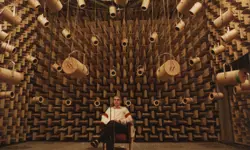
Radio spectrum

The frequency allocation chart for radio spectrum. This has been adapted with permission from part of Roke’s Spectrum management and frequency allocation chart.
For something that is regularly auctioned for billions of pounds, radio spectrum is surprisingly difficult to describe. The term ‘radio spectrum’ typically refers to the part of the electromagnetic band that is used for radio communications, often taken to be 30 kHz to 300 GHz. Anything above these frequencies is light, UV and other bands.
The radio spectrum is conventionally divided into bands by international regulatory bodies such as the International Telecommunications Union (ITU), a branch of the United Nations. These bands are then sometimes allocated to particular uses. So, for example, the ‘800 MHz band’ spans 790 MHz to 862 MHz in Europe and has been allocated to mobile communications, so is used by mobile operators to deliver 4G services.
Almost every part of the spectrum has been allocated to at least one service, although some is set aside for anyone to use, such as for Wi-Fi and Bluetooth solutions.
More specifically, when someone such as a mobile operator buys a spectrum licence, they buy the rights to use a particular band of frequencies for a specified period of time, often 15 to 20 years. The government promises to enforce this by prosecuting anyone else who tries to use the frequencies. In that respect, there are analogies to buying a leasehold on a piece of land. Just like land, the value of spectrum varies according to its quality and the uses it can be put to. There are issues with noise generated by neighbours, detailed questions around where the boundaries actually lie, concerns over whether one proprietor owns too much and is therefore dominant, and more.
It has been said of land that ‘they just don’t make it any more’ and the same is true of spectrum. There is continuous pressure to use it ever more intensively and that has led to recent trends to find intelligent ways to share it and to pressure those hoarding it to return or sell it on. Its value is huge; without the ability to use spectrum with certainty, it would be difficult to invest in mobile networks, air-traffic control systems, TV and radio transmission, satellite communications systems and much more.
Various studies have estimated that the use of radio spectrum adds about 3% to a country’s GDP but it is hard to envisage how a modern democracy could function without well-managed yet efficient use of the radio spectrum. In the UK, management of spectrum is assigned to Ofcom, which determines usage, decides who gets to own it and polices interference.
Interest in radio spectrum is expected to grow as 5G moves closer to being deployed and demand continues to increase at an unprecedented pace as more mobile services are consumed.
***
This article has been adapted from "How does that work? Spectrum", which originally appeared in the print edition of Ingenia 71 (June 2017).
Keep up-to-date with Ingenia for free
SubscribeRelated content
Electricals & electronics

Accelerometers
Used in earthquake measurements, laptops, planes and even in stargazing apps, today’s accelerometers are much smaller than when they were first developed in 1927. Find out how they detect movement and vibration.

How to maximise loudspeaker quality
Ingenia asked Dr Jack Oclee-Brown, Head of Acoustics at KEF Audio, to outline the considerations that audio engineers need to make when developing high-quality speakers.

Cable fault locator
The winner of the Institute of Engineering and Technology’s 2014 Innovation Award was EA Technology’s CableSnifferTM, which uses a probe and chemical sensing technology to identify faults, saving energy companies millions of pounds each year.

High speed evolution
In December 2010, Eurostar International Ltd awarded a contract for 10 new high speed trains to Siemens. The company has used a system developed over decades to maximise the performance and passenger-carrying ability of its 320km/h trains.
Other content from Ingenia
Quick read

- Environment & sustainability
- Opinion
A young engineer’s perspective on the good, the bad and the ugly of COP27

- Environment & sustainability
- Issue 95
How do we pay for net zero technologies?
Quick read

- Transport
- Mechanical
- How I got here
Electrifying trains and STEMAZING outreach

- Civil & structural
- Environment & sustainability
- Issue 95